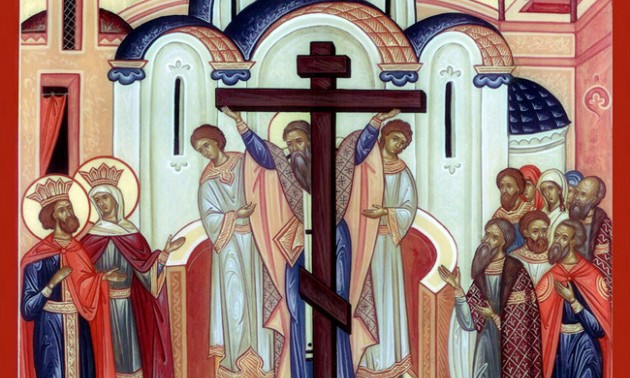Today, 30th of September, Orthodox Christians celebrate the holiday of the Holy martyrs, FAITH, HOPE AND LOVE and their mother SOPHIA
On this day we celebrate the memory of the famous Roman woman Sofia, who educated her daughters to have faith in themselves and in God, to have hope in God's goodness and to have love for close people and for the Almighty.
On this day we celebrate the memory of the famous Roman woman Sofia, who educated her daughters to have faith in themselves and in God, to have hope in God's goodness and to have love for close people and for the Almighty.
Sofia and her three daughters martyrs Vera (Faith), Nada (Hope) and Ljubov (Love) became popular in the late first and early second century, with their faith in Jesus Christ and their willingness to sacrifice for him. Mother Sophia was worthy of the name she wore, which means wisdom. She lived as a true Christian even after her husband's death, with good deeds, calmed soul and in obedience to God's will. In that spirit, she educated her three daughters who wore the names of the three most important Christian values: Faith, Hope and Love.
Soon after the birth of the third daughter, Sofia was widowed. She committed to her daughters in order to grow them and to educate them in the spirit of Christian faith. Together they read and re-read the prophets and apostles books. But this way of life in this family, did made an impression in the surroundings. First, the governor of the area, Antiochus, assured that the whole family profess Christian faith and then he presented that to the Emperor Hadrian, a great opponent of Christianity and persecutor of Christians. The emperor called the mother and three daughters to make sure what he heard was true . But, they not only weren't afraid of that invitation, but they gladly went to the infamous ruler to whom the wise mother announced:
- I'm a christian! And I'm proud of that. My three daughters are also proud of that.
The emperor was surprised by the decisive statement of the mother, but did not want to immediately rule on their punishment, hoping to win. The conversation was adjourned for three days and in the meanwhile they were monitored by a Roman, named Palladio. During the three days, they lived with their mother at Palladio's home and the mother spoke to hers daughters only about the Christian faith. She wanted to further strengthen them in the faith, saying that the Son of God is worth to suffer and to die for, and that she would be happy to be the mother of martyrs who died for the Savior Jesus Christ.
After three days, the emperor called them again to court and offered the three girls to be his children, to give them great wealth, luxurious and comfortable life, only to renounce their faith and to start worshiping the gods rulers of the universe. Otherwise they are threatened with a cruel death.
The three girls, without fear, and with great determination in one voice answered:
- Our father is God who lives in heaven. He cares for us and we want to be respected by him. We want to be his real children. We only worship him and obey his commandments, and despise your gods. We are not afraid of your threats because we are ready to endure great suffering in the name of Jesus Christ, our God.
Surprised by such a response emperor asked the mother how old are her daughters, she replied:
- First, Vera is 12, Nada is 10 and the third Ljubov is 9 years old.
The emperor came to the idea that he can reach his goal with separate talks with the girls and with promises and threats. So first he called Faith, and offered sacrifice to the goddess Artemis, and when she refused, he put here on severe suffering and death. Then he did the same with the other two sisters, Hope and Love. The mother watched the suffering of her daughters convinced that they do that for our Savior Jesus Christ. Then she buried them together and and prayed over their grave for 3 days after she surrendered her soul to her Saviour, confident that she goes to her daughters. That happened in the year 126.
Holy Church declared Sophia a martyr too, because she is credited for bringing up their daughters, but also because she suffered along with them while the infamous emperor tortured them..


















